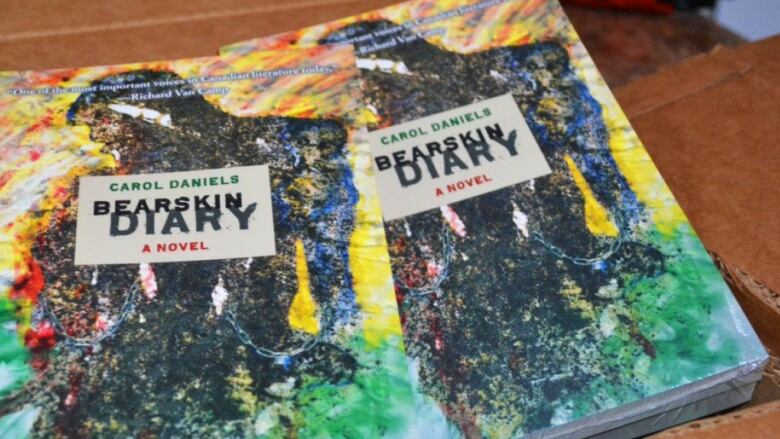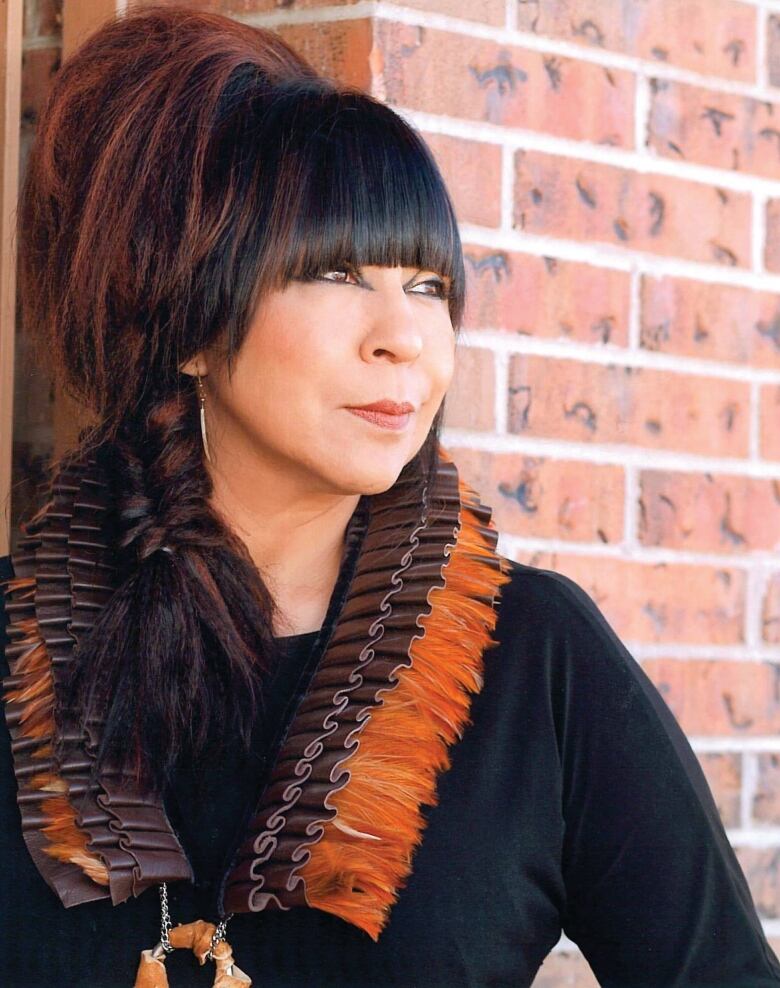Author Carol Daniels blends fiction with Canada's Indigenous history in Bearskin Diary
Daniels' first novel explores mass removal of Aboriginal children from their homes, known as the Sixties Scoop

Some stories just need to be told, such is the case with Bearskin Diary, the first novel by Saskatchewan author and journalist Carol Daniels.
Daniels was one of the featured authors the Sunshine Coast Festival of the Written Arts in Sechelt and she joined the CBC's North by Northwest to talk about how her work of fiction blends with her own history.
Bearskin Diary tells the story of a courageous First Nations journalist named Sandy who was a victim of the Sixties Scoop, growing up ashamed of her aboriginal history and culture until it simply couldn't be ignored.
"There's been a whole bunch of discussion, rightfully so, about residential school and the Truth and Reconciliation Commission findings, but there was no mention at all about the1960s scoop up or really no discussion about it," said Daniels, who was excited to initiate that discussion by centring her novel around the topic.
The Sixties Scoop refers to theCanadian government practice during the 60s, 70s, 80s of taking Indigenous children from their birth families the moment they were born, in the hopes of assimilating them better.
Daniels was one of thousands of babies fostered or adopted out to mostly white families across Canada, the United States and Europe under the program.
"That was the 1960 scoop up, just taking babies right out of the hospital. Often as was the case with my own biological mother, she was not married and so that gave them a reason in their minds," she said.
'I think we would've liked each other'
Daniels was placed in the foster care system and never had the opportunity to meet her mother, who died in a car accident when Daniels was about 14 years old. She discovered this when she was in her 30s after tracking down her biological family.

"She named me, and I love the name, Carol Ann. Her middle name was Ann, and so I've always really cherished my name because it was the only thing she gave me that I was allowed to keep," she said.
"I think we would've liked each other. It sounds like a weird thing to say, but I think she would've been the type of woman who I would've said, 'Oh my God, I am so proud to be related to you and to be your daughter,' the way I look at my own children now."
Shared experiences shape the story
The book was written to reflect the shared experiences of many aboriginal people who struggle to find representation in a country where their heritage is suppressed, according to Daniels.
A scene in the book where the lead character Sandy attends her first powwow reflects this feeling of dissonance.
"It's overwhelming when you grow up and every scooped kid that I have talked to over the years has such a similar story, almost exactly the same as mine where you just are so disconnected from everything and feel like you really don't belong anywhere," Daniels said.
"Then all of a sudden something happens that is part of your DNA, it's in your blood and you recognize it immediately. Whether it's the smell of moose meat stewing or hearing the drums at a powwow, something will connect you."
"It's kind of a way as a writer for me to encourage them to say, I need to learn more about who I am because our culture is beautiful."
Daniels herself is journalist, and made history when she became first Aboriginal woman to anchor a national newscast on CBC Television, but says her passion for fiction stems from being able to break free from the facts to create a powerful story.
Some of the situations that Sandy finds herself in within the story are dangerous and, as Daniels describes, "mythological or supernatural."
"In terms of a compelling story, I had to bring in real dark elements of human nature that are not a part of my life. I like the fact that [with] fiction, you can play with whatever it is you want to do," she said.
"I like to be able to move beyond where I've been as a writer."
Healing through writing
Writing works as a form of catharsis in her life now, Daniel says, helping her heal from her past and communicate a common history of trauma.
"I'm sure it will be a tremendous source of pain all my life, but I have to deal with it. I am so grateful for writing and singing and powwow dancing, I do things that I love as a way to say, 'Okay, there's nothing I can do about changing what happened in history in Canada, but I can work towards building and rebuilding and bringing up my own children to be proud of the fact that they have a Cree-Dene background.'"
With files from the CBC's North by Northwest
To hear the full interview listen to audio labelledAuthor Carol Daniels blends fiction with Canada's Indigenous history in Bearskin Diary












_(720p).jpg)


 OFFICIAL HD MUSIC VIDEO.jpg)
.jpg)



























































































